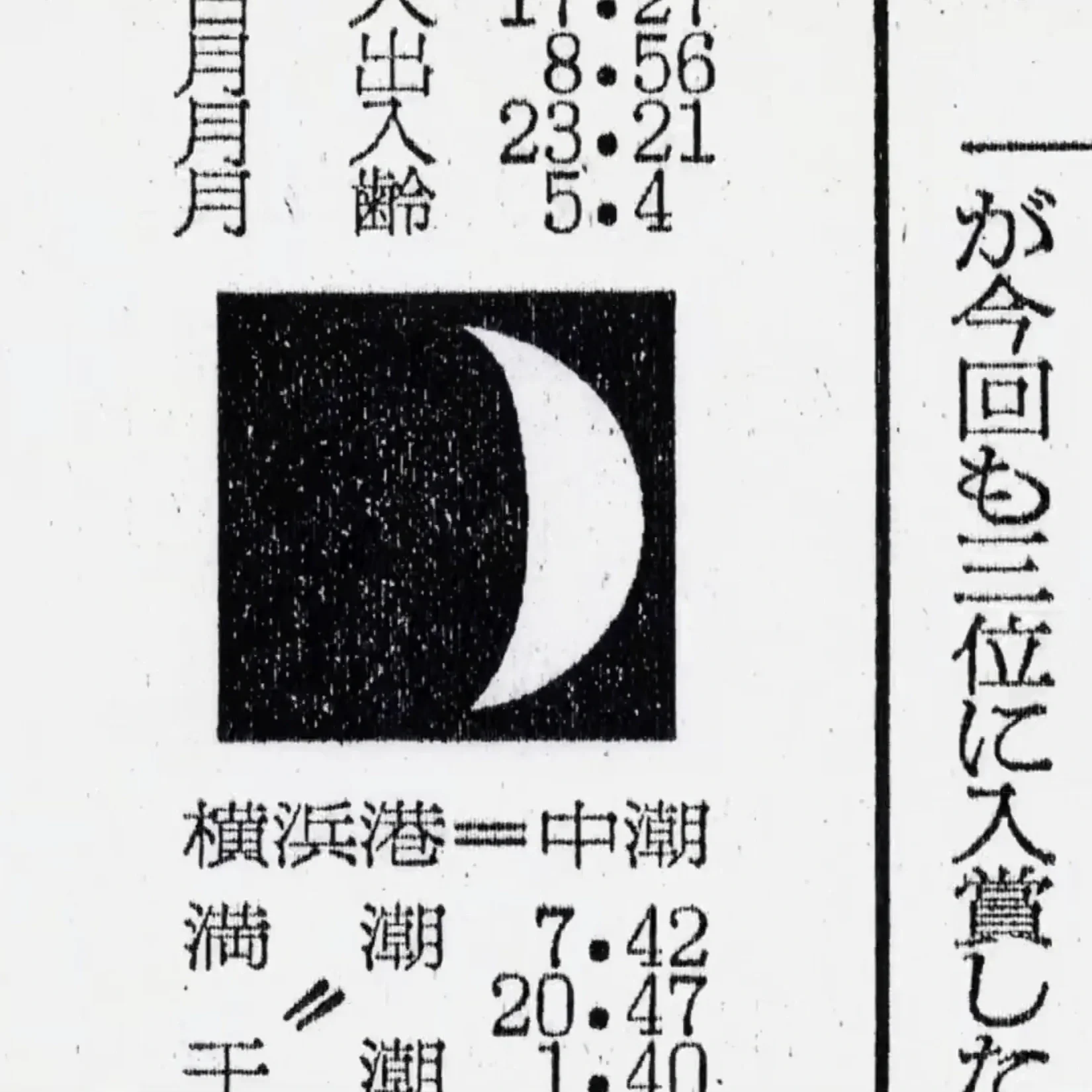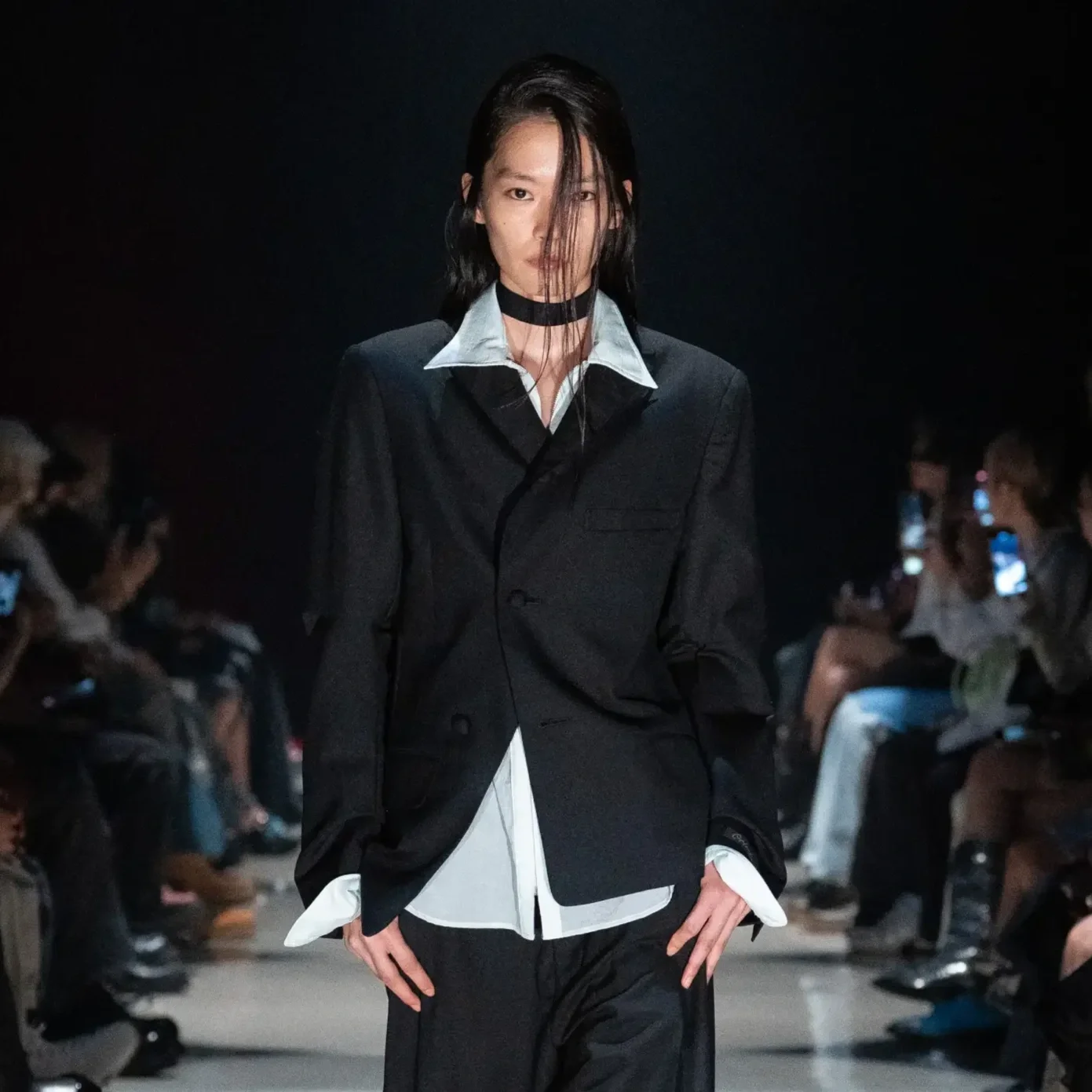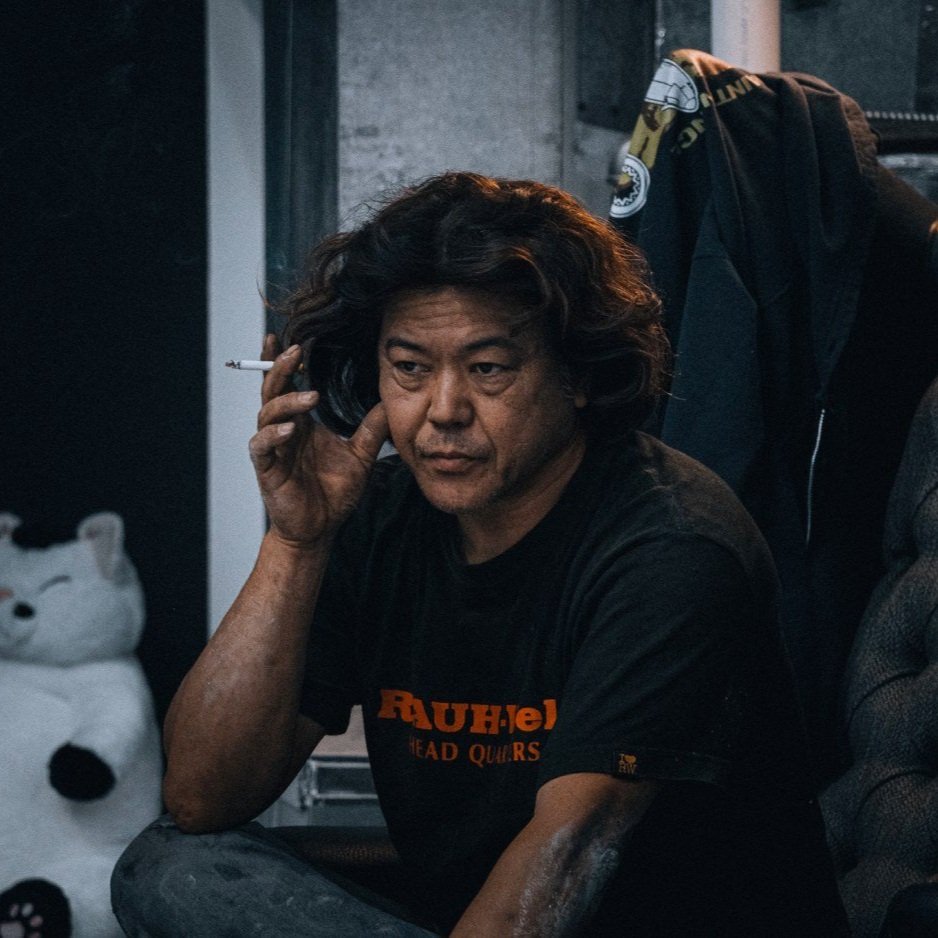Exploring the Sonic Underground of Japanese Noise
Yuko Araki│© Adi Putra
As I stand before the curtain, I’m not sure what I’m going to face on the other side. Coming off the streets of Shibuya, I've been led up a set of stairs towards Mutek, a festival billed as “a mecca for avant-garde electronic music”. The closer I get to the venue, however, the less I understand about the sounds I’m hearing on the other side. Incomprehensible, distorted feedback seeps out, muffled by thick concrete. A barrage of bass thumps out to an irregular, frenetic rhythm. A guard scans my ticket. “Dozo”.
What greets me on the other side can only be described as a wall of noise. Deafeningly loud, overwhelming noise, pulsating out of ceiling-high sound systems with little regard for eardrums or conventional musical structure. Accompanied by intense, almost hallucinogenic visual effects, it was the start to a gig like no other. I staggered into the crowd, confused and lightheaded, as if I’d just taken a blow to the head. This was my first introduction to Japanese Noise music.
So, What is Noise Music?
Japanese Noise music, or ‘Japanoise’, is a genre consisting of high levels of distortion, static, compression and feedback, so much so that it is hardly recognisable as music. 'Noisicians’ aim to push the boundary between noise and music, subverting sounds from a wide variety of musical genres with extreme volume and distortion.
As a specific style, Noise music is both entirely distinctive but notoriously difficult to pin down. “Beyond Noise’s consistent loudness, it is challenging to describe the sonic features of Noise as a musical form,” says David Novak, author of the definitive book Japanoise: Music at the Edge of Circulation. “It is often unrelentingly harsh, but also ambient and dynamic; it can be improvised and freely played or deliberately prepared, edited, and through-composed".
“It’s music without a clear scale,” adds Yuko Araki, a multi-instrumentalist and composer within the contemporary Japanese Noise scene. “But it's also music where listeners can hear different harmonies in their heads, depending on the person ... processing heavy and dense sounds results in a sonic landscape unlike anything else you've heard before: it's as if a thousand leaves oscillate simultaneously”.
Originating in the early 20th century, the founding and theorisation of Noise is credited to Luigi Russolo, an Italian painter and composer. An ardent Futurist, Russolo argued in his 1913 manifesto The Art of Noises that the Industrial Revolution had fundamentally altered the sounds of everyday life, and subsequently, our relationship to music. “Ancient life was all silence,” he writes. “In the nineteenth century, with the invention of the machine, Noise was born. Today, Noise triumphs and reigns supreme over the sensibility of men.”
In this new age of industrial Noise, Russolo claimed that traditional music would eventually become vastly unstimulating for most people, prompting a new era of music made up of “the coming and going of pistons, the howl of mechanical saws, [and] the jolting of a tram on its rails”. Russolo’s ideas sparked experimentation with Noise throughout the 20th century, with international artistic movements from the Dadaists to free jazz incorporating the sounds of industry into their work. However, it was in Japan that Noise truly found a home.
Luigi Russolo and Ugo Piatti’s Noise Machine, known as intonarumori│via Wikimedia Commons
A new meaning for Noise in Japan
Noise arrived in Japan in the latter half of the 20th century, carried in part by early pioneers like Les Rallizes Dénudés. However, unlike Russolo’s vision of Noise as the inevitable future of mainstream music, in Japan it became something far more subversive. Noise became the soundtrack of dissent - fueling a fringe underground scene defined by political rebellion, anticonsumerism, and a deep-rooted impulse to defy the cultural hegemony that had taken hold in the wake of Japan’s defeat in the Second World War.
The American occupation of postwar Japan from 1945-52 saw the nation’s mainstream culture dominated by Western arts, media and music. During the occupation, U.S forces ordered a seismic increase in the production and distribution of radios, with the aim of broadcasting political messages and American popular music to the population at large. Soon, the sounds of jazz, rock’n’roll and country music flooded Japan’s airwaves, and American stars like Elvis Presley and Frank Sinatra gained widespread popularity. The cultural influence of the U.S. continued to dominate Japanese popular music throughout much of the 20th century, leading some to look for more radical alternatives. Within this context, the unorthodoxy of a genre like Noise became a major part of its appeal, as fans formed a distinct and tight knit community in reaction to the dominance of imported American culture.
Beneath the glossy veneer of imported pop, then, a hidden world began to take shape - an underground network where Noise became both a refuge from and a rebellion against Western cultural dominance. During this era, keeping the community underground and outside the realm of mainstream consumer society was central to its identity. Noise recordings were distributed throughout an intricate network of hidden-away record shops and clubs, label owners and shop clerks, all acting as guards to the treasure of an otherwise inaccessible music culture. “In Japanese cities, such places rarely advertise in magazines or newspapers and may be identified only by an obscure name on an apartment building doorbell”, says David Novak. “Even for Japanese city dwellers, a particular store or club may be legendary but notoriously difficult to locate”. The allure of these mysterious underground spaces, tangled amongst a web of McDonald’s, Starbucks and Tower Records, came from the possibility of discovering a new world untouched by global corporate influence. In this way, for those members of its underground community, Noise was channelled as a form of protest against the ordinary world ‘above’.
Rebellion through Performance
Nowhere was this sense of protest clearer than in the rebellious, primal and sometimes violent performances of the time. Early pioneers of Japanoise raged against consumer culture and Japanese collectivism in a quest for self-discovery, with performances destructive and introspective in equal measure.
Perhaps no artist embodied the sheer chaos of the Japanoise ethos more than Hanatarash, the notorious project led by Yamantaka Eye. The band’s shows were mythologised for their destruction and violence, which once escalated into a full-scale assault on the venue that hosted them. In one particularly infamous gig in 1985, Yamantaka Eye drove a bulldozer through the front door of the Tokyo club Toritsu Kasei Super Loft. The performance was less a concert than an act of industrial demolition, as Eye rode into the stage, destroying musical equipment and narrowly avoiding audience members. “We got on this thing and rode it—bang!—through the doors of the hall,” Eye later recalled. “It’ll spin a full 360 degrees, so we were spinning and driving through the audience, chasing them around, when suddenly there was this wall we spun into and opened a rather large hole in. The wind came blowing in. The shovel part got stuck in the hole and, trying to get it out, we pushed a switch that started the tractor tipping up, like it was about to go over backwards... the place was all concrete walls and no windows. We smashed everything.”
Hanatarash's performances often teetered on the brink of bodily harm, with Eye infamously slicing his own leg open with a chainsaw mid-show and hurling chunks of metal into terrified audiences. On another occasion, he brandished a Molotov cocktail, threatening to set the venue ablaze. Perhaps the most grotesque display of all came when he sliced a dead cat in half with a machete and flung the remains into the crowd. According to Eye, these mad acts weren’t just random bursts of violence; they were deliberate provocations, attempts to tear through the ordered fabric of Japanese society and force audiences into an encounter with something primal and ungovernable.
Hanatarash│© Gin Satoh
Alternative Philosophies of Noise
Not all Japanoise artists took such an overtly destructive approach, but the underlying spirit of rebellion remained. Merzbow, the critically acclaimed solo project of Masami Akita, pursued a different kind of resistance - one rooted in intellectual defiance rather than physical violence. Akita opposed what he saw as the destructive expansion of consumer capitalism in Japan, taking particular issue with danchi housing developments, a style of cheaply built housing projects that were constantly demolished and rebuilt in Japanese cities throughout the postwar era. For Akita, this form of self-destructive development was emblematic of Japanese consumerism and its obsessive pursuit of the new.
In response, Akita began performing as Merzbow, a lifelong solo Noise project that found its philosophical grounding in the Dadaist art of Kurt Schwitters, specifically his sculptural work Merzbau. Schwitters’ Merzbau—the namesake for Merzbow – was an ever-evolving collage of materials, junk and urban debris, continously added to over the course of the artist’s life. This method of layering and accumulation resonated with Akita, who adopted it as a conceptual model for his own work. Through Merzbow, Akita offered a sustained artistic resistance to the cycles of production and destruction that he saw as endemic to modern consumer society. His commitment to this philosophy is reflected in a staggering body of work spanning over 45 years and over 400 studio albums, a catalogue that continues to expand to this day.
While Merzbow’s approach could not be further from the explosive performances of Hanatarash, both artists ultimately shared a common goal. Their methods may have differed—one emphasising intellectual and aesthetic practice, the other brute physicality—but both used Noise as a tool of rebellion. In doing so, they captured the essence of Japanoise: a defiant, uncompromising rejection of consumer culture and musical conformity. Whether through the wreckage of a bulldozer on stage or the slow accumulation of sound and meaning, Japanoise artists carved out a space where noise itself became a form of resistance.
The Future of Noise
So, where does this leave us today? Whilst the days of bulldozers, Molotov cocktails and animal corpses are by now a distant memory, and the dawn of the Internet has reduced some of the obscurity of the underground scene, a core sense of rebellion remains. Even as new generations come to interpret Noise in new ways, for many, it continues to act as a means for escapism from the seemingly omnipresent sounds of mainstream culture in daily life. “I know this might upset some people, but I'm not a fan of J-pop," says Yuko Araki, a multi-instrumentalist and composer hailing from Tokyo’s contemporary Noise scene. “There are days when I have to listen to J-pop at the supermarket. Because sound memories tend to get stuck in my head, there are times when I play instruments to overwrite them.”
Today, the Japanoise scene remains alive in underground venues like Bears in Osaka and Ochiai Soup in Tokyo, where the next generation of artists continue to push the genre further. “Listening to the sound system at Ochiai Soup, you can really sense their deep understanding and love for noise,” Araki says. “Because acoustics are so vital in noise music, I think that experiencing noise music in venues like Ochiai Soup is essential for the growth of the noise community”.
This is especially true in an era where music is searchable and streamable, and underground subcultures can be instantly exposed, circulated, and even commodified via the internet. In this context, spaces like Ochiai Soup serve as important incubators for new generations of musicians to cultivate community and reinterpret the genre’s radical spirit.
How that change will manifest is yet to be seen. As society becomes increasingly digitised and corporate influence over media and music grows ever stronger, the role of Noise may evolve into new forms of resistance. The very sounds of our world are shifting - AI-generated voices, algorithmically curated music, and 30-second ad pauses are shaping the sounds we hear every day. How will noise musicians of the future respond? Will they find new ways to deconstruct these sounds and repurpose them as acts of defiance, as their predecessors did with industrial machinery? Or will Noise finally reach the heights that Luigi Russolo originally intended, reflecting the changing sounds of modern life and becoming the music of the mainstream?
Masami Akita│via Wikimedia Commons│© Michael Hoefner










Inside the legacy of one of anime’s most iconic studios.